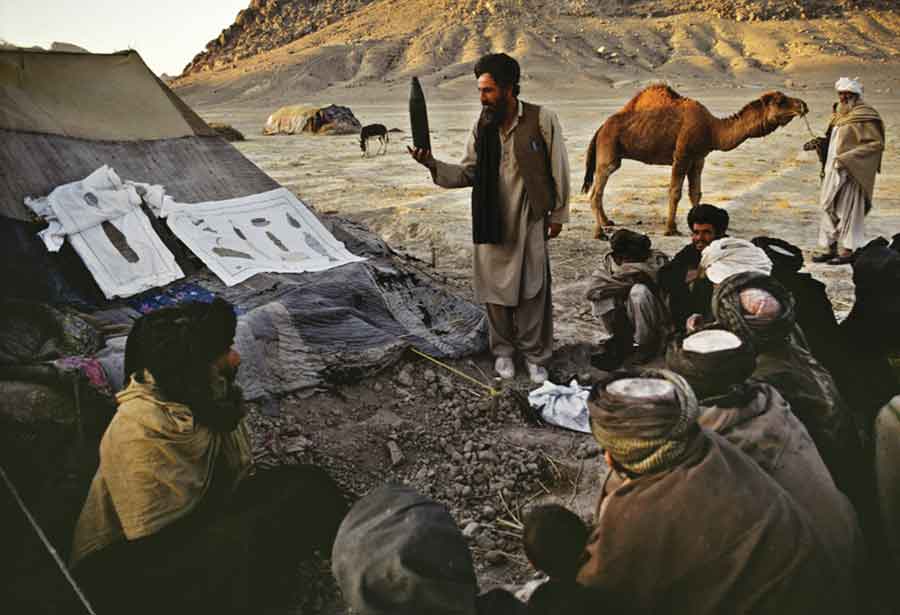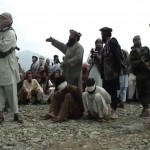
As the September 11 deadline for remaining US troops to leave Afghanistan approaches amid spiraling violence, there are reports about the CIA and other western agencies evaluating and courting regional leaders outside the Afghan government to recruit them as informants and assets who would provide intelligence about terrorist threats after the Americans have left. This is in certain quarters is being read as acknowledgement that the Afghan Government could collapse, especially with anti-Taliban militias rallying to protect northern Afghanistan – on lines of the erstwhile Northern Alliance.
Afghanistan’s President Ashraf Ghani recently said in a media interview that the people of Afghanistan don’t want the Taliban – ask people who have experienced their rule. He also said the Taliban are increasing violence everywhere. They are assassinating and targeting civilian actors. They’ve grown up outside normal families in madrassas in the absence of women, so women have been construed as a threat to them. To reinforce what Ghani said about Taliban’s outlook towards women, there are reports from some Taliban controlled areas of girls fleeing primarily because they do not want to be deprived of education.
Ashraf Ghani said the United Nations has documented that the Taliban have not separated themselves from the al-Qaeda. For effective counterterrorism capability, he said Afghanistan needs regional and international support, whether it is air power or technology, because this is a global threat. On the specific question whether situation can become a threat to the US homeland if it gets out of hand, Ghani’s spontaneous answer was “of course”.
Abdullah Abdullah, chairman of Afghanistan’s High Council for National Reconciliation told media that the US has promised to continue supporting Afghanistan’s security forces, economic support and humanitarian support, which means that Afghanistan is not being abandoned. But this brings to the fore the crucial statement by President Ghani that Afghanistan needs regional and international support, whether it is air power or technology – how and from where will Afghanistan get this by the US and others?
Apparently, the US has still not determined how it will combat terrorist threats like al-Qaida after leaving Afghanistan. Then there is also the issue of repositioning American troops in other nearby countries and from where US aircraft, armed drones and reconnaissance aircraft will provide support to Afghan National Security Forces (ANSF) in timely manner, this not being a 40-nation coalition led by America as against the ISIS in Iraq-Syria.
There was some unofficial news that US may retain an airbase near Kabul but that is ruled out. There was also speculation that US may establish a base or bases on the Pakistani side of the Afghanistan-Pakistan border, which was absurd considering decades of Pakistani support to the Taliban. This anyway has been ruled out with a statement issued by Pakistan’s foreign office that said, “There is no US military or air base in Pakistan, nor was any such proposal envisaged. Any speculation on this account is baseless and irresponsible and should be avoided. Pakistan and the US have a framework of cooperation in terms of Air Lines of Communications (ALOC) and Ground Lines of Communications (GLOC) in place since 2001. No new agreement has been made in this regard.”
In any case with China holding the jugular of Pakistan, any new US-Pakistan agreement of this nature is out of the question and a US base in Pakistan impossible. On May 26, the Taliban warned Afghanistan’s neighbours against allowing the US to operate military bases on their soil, insisting they would thwart such a historic mistake. The Taliban statement read, “We urge neighbouring countries not to allow anyone to do so. If such a step is taken again, it will be a great and historic mistake and disgrace.” The statement added that the Taliban would “not remain silent in the face of such heinous and provocative acts.“
David F Helvey, Assistant Secretary of Defence for Indo-Pacific Affairs, told the US Senate Armed Services Committee recently, “Pakistan has played an important role in Afghanistan. They supported the Afghan peace process. Pakistan also has allowed us to have over–flight and access to be able to support our military presence in Afghanistan. We will continue our conversations with Pakistan because their support and contribution to the future of Afghanistan, to future peace in Afghanistan, is going to be critical.” The air and land access to Afghanistan is no special favour being under the 2001 agreement between the two countries as mentioned by Pakistan’s foreign office above.
To the question whether US is confident of its regional partners and their capacity and commitment to drive terrorists out of the region, Helvey replied, “We will have to work with our local and regional partners, and we want to continue developing those capabilities and those partnerships to be able to ensure that we have the right of framework to address the threats.” The US Defence Department, he said, was “working today” with its inter-agency colleagues on the right type of arrangements, relationships and frameworks to ensure that Afghanistan never again becomes a haven for terrorism. Whether the US Senate Armed Services Committee was satisfied with Helvey’s response is not known but it certainly doesn’t inspire much confidence being based on assumptions with too many loose ends.
Media has quoted an unnamed US military official saying that as of today, US fighter jets onboard the USS. ‘Eisenhower’ in the Arabian Sea can fulfill only around 75 percent of the requests over Afghanistan. This requirement may increase exponentially after US jets based in Afghanistan are pulled out and the Taliban open multiple frontspost US troop exit. The US, therefore will have to fly fighter aircraft and bombers from US bases in the Middle East or from aircraft carriers to support counterterrorism missions by the ANSF since there are no bases to position aircraft close to Afghanistan. This in turn will require midair refueling stops and more number of refueling tankers.
The US would need to weigh what quantum of external support, especially air, would be needed in case a crisis situation develops in Afghanistan after US troops exit, which may or may not have been war gamed. This will also need to take into account that the Taliban have been bearing attacks by US jets and bombers, even subjectedto the Mother of All Bombs (MOAB), and China will arm the Taliban with better weaponry to shoot down US aircraft and drones.





The US has already signaled that it will continue its “stand-off” predator assassination over Afghanistan air space to seek maintain some semblance of authority over the chaos it has decreed.